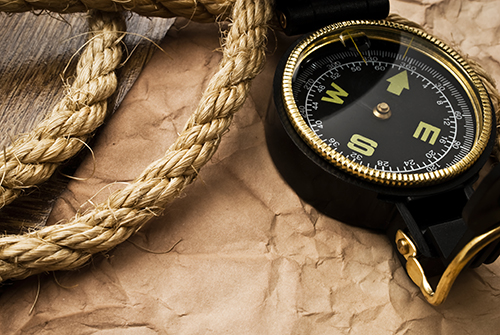 Do you love boating but have trouble speaking the language?
Do you love boating but have trouble speaking the language?
Are you sunk when people throw around boating jargon, terms and lingo when boating?
Do you look around lost when someone says there are “fish jumping off the starboard bow”?
We’re here to help!
Here are 40+ of the most common nautical terms on the lake. This cheat sheet won’t make you a ship’s captain, but you’ll be able to hold your own on the waves.
Boating Terms
Aft: the rear part of a boat, behind the middle of the vessel (see “fore.”)
Anchor: object designed to stop the drift of a boat; usually a metal, plough-shaped object designed to sink into the lakebed or ground and attached to the vessel via a line or chain.
Ashore: on or moving towards the beach or shore.
Bearing: the horizontal line of sight between two objects (typically between a boat and its destination.)
Below decks: any of the spaces below the main deck of a vessel.
Bow: the front of a vessel (either side or both.)
Bowline: a type of knot that produces a strong, fixed loop, commonly used in sailing or mooring.
Breakwater: structure built on a coast or shoreline to protect against waves and erosion.
Buoy: a floating object of defined shape and color, anchored at a set location to aid in navigation.
Bunks: wooden supports on which a boat rests while it’s being transported in a trailer.
Capsize: when a boat turns onto its side or completely upside down in the water.
Cast off: to undo all mooring lines in preparation for departure.
Channel: a portion of a waterway that is navigable by boat, usually marked.
Chart: a map used for navigation on the water.
Cleat: sturdy metal fittings to which a rope can be fastened (usually to moor a boat, fixed on docks and/or boats themselves).
Current: the natural, horizontal flow of water.
Deck: the permanent covering over a compartment or hull (usually the main walking surface.)
Downstream: Direction in which the current is moving, or an object in that direction.
Draft: the vertical distance between the waterline and the bottom of a boat’s hull. This is important to know in order to prevent running aground.
Echo sounder: electronic device that uses sonar to measure the depth of water under a boat.
Fender: cushioning device hung on docks and the sides of vessels to prevent damage to them.
Fore: part of the vessel towards the front, or bow (see “aft”.) Here’s a tip to remember the difference between “fore” and “aft.” If you’re in the boat, “fore” is facing “forward,” and “aft” is what is “after” the boat.
Gunwale: the upper edge of a boat’s hull.
Hull: the outer shell and framework of a ship.
Idle speed: the slowest speed at which steering is possible for a boat; the boat shouldn’t produce a wake at this speed.
Inboard motor: a type of boat motor housed inside the hull, with a drive shaft running through the bottom of the hull to a propeller at the other end.
Knot: a unit of speed, equal to one nautical mile (1.15 miles) per hour. It’s called a “knot” because it was originally measured by paying out a line from the stern of a moving boat; the line had a knot every 47 feet 3 inches, and the number of knots passed out in 30 seconds gave the speed through the water in nautical miles per hour.
Leeward: in the direction that the wind is blowing towards.
Marina: a docking facility for boats, small ships and yachts.
Mast: a vertical pole on a ship with sails or rigging.
Outboard motor: a motor mounted externally on the back of a boat (usually smaller boats.) Steering can happen by turning the entire motor on a swivel, or by using a rudder.
Overboard: anything that has gone over the side of the boat.
Personal flotation device (PFD): a life jacket, buoyant vest or cushion designed to be worn (or held) and keep someone afloat in the water.
Pier: wooden or metal structure that extends into the water from the shoreline, allowing vessels to dock.
Propeller: rotating device attached to a boat’s motor that propels the boat through the water.
Rudder: steering device attached under the boat, usually shaped like a blade, which turns to steer the boat.
Sounding: measuring the water’s depth.
Stern: the rear part of a ship.
Upstream: against the current, or the direction from which the current is flowing.
Wake: the turbulence behind a vessel caused by its passing.
Waterline: the line where the hull of a ship meets the water’s surface.
Windward: in the direction the wind is blowing from.
Of course, these aren’t all the boat jargon terms out there. There are hundreds of others! Find more at http://www.discoverboating.com/resources/glossary.aspx.

